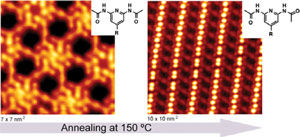Quantum simulator and supercomputer at the crossroads
MPQ-LMU scientists in an international collaboration measure for the first time a many-body phase diagram with ultracold atoms in optical lattices at finite temperatures
Advertisement
Transitions between different phases of matter are a phenomenon occurring in everyday life. For example water – depending on its temperature – can take the form of a solid, a liquid or a gas. The circumstances that lead to the phase-transition of a substance are of fundamental interest in understanding emergent quantum phenomena of a many-particle system. In this respect, the ability to study phase transition between novel states of matter with ultracold atoms in optical lattices has raised the hope to answer open questions in condensed matter physics. MPQ-LMU scientists around Prof. Immanuel Bloch in collaboration with physicists in Switzerland, France, the United States and Russia have now for the first time determined the phase-diagram of an interacting many-particle system at finite temperatures. Employing state-of-the art numerical quantum “Monte Carlo” methods implemented on a supercomputer, it was possible to validate the measurements and the strategies used to extract the relevant information from them. This exemplary benchmarking provides an important milestone on the way towards quantum simulations with ultracold atoms in optical lattices beyond the reach of numerical methods and present day super computers.
In the experiments, a sample of up to 300.000 “bosonic” rubidium atoms was cooled down to a temperature close to absolute zero – approximately minus 273°C. At such low temperatures, all atoms in the ultracold gas tend to behave exactly the same, forming a new state of matter known as Bose-Einstein condensate (BEC). Once this state is reached, the researchers “shake” the atoms to intentionally heat them up again, thereby controlling the temperature of the gas to better than one hundredth of a millionth of a degree. The so-prepared ultracold – yet not as cold – gas is then loaded into a three-dimensional optical lattice. Such a lattice is created by three mutually orthogonal standing waves of laser light, forming “a crystal of light” in which the atoms are trapped. Much like electrons in a real solid body, they can move within the lattice and interact with each other repulsively. It is this analogy that has sparked a vast interest in this field, since it allows for the study of complex condensed matter phenomena in a tunable system without defects.
When being loaded into the optical lattice, the atoms can arrange in three different phases depending on their temperature, their mobility and the strength of the repulsion between them. If the strength of the repulsion between the atoms is much larger than their mobility, a so-called Mott-insulator will form at zero temperature in which the atoms are pinned to their lattice sites. If the mobility increases, a quantum phase transition is crossed towards a superfluid phase in which the wave functions of the atoms are delocalized over the whole lattice. The superfluid phase exists up to a transition temperature above which a normal gas is formed. This temperature tends to absolute zero as the phase transition between the superfluid and the Mott-insulator is approached – a feature which is typical in the vicinity of a quantum phase transition.
In order to determine the phase of the atoms in the experiments, they are instantaneously released from the optical lattice. Now, according to the laws of quantum mechanics, a matter wave expands from each of the lattice sites, much like electromagnetic waves expanding from an array of light sources. And as in the latter case, an interference pattern emerges that reflects the coherence properties of the array of sources. It is this information of the coherence properties that the scientists are looking at in order to read out the many-body phase of the atoms in the artificial crystal: The normal gas in the lattice shows little coherence and almost no interference pattern would be visible after releasing the atoms. The superfluid, however, does exhibit long-range phase coherence which results in sharp interference peaks. By determining the temperature of the onset of these defined structures for various ratios of interaction strength and mobility, the researchers could map out the complete phase boundary between the superfluid and the normal gas.
Given the large number of particles and the size of the artificial crystal, it is extremely demanding to simulate the physics of the present systems on a classical computer. Only recently, suitable quantum Monte Carlo methods have been developed, that allow for the direct simulation of the experiments on up to ten billion lattice sites without significant simplification of the problem. They have been implemented at the ETH in Zurich on the “Brutus” computer cluster. With the simulation results, it was for the first time possible to directly determine the temperature of the lattice gas, to quantify heating rates in the optical lattice and to validate the strategies employed to determine the phase diagram. The numerical calculations, however, could last several days, up to weeks, where the experiments could be performed within one or two hours. This difference in the timescales shows the value of the experimental setup as a “quantum simulator” of numerous, more complex problems beyond the reach of state-of-the-art numerical methods. [Stefan Trotzky]
Original publication: Stefan Trotzky, Lode Pollet, Fabrice Gerbier, Ute Schnorrberger, Immanuel Bloch, Nikolay V. Prokof’ev, Boris Svistunov and Matthias Troyer; „Suppression of the critical temperature for superfluidity near the Mott transition”; Nature Physics, Advance Online Publication

































































